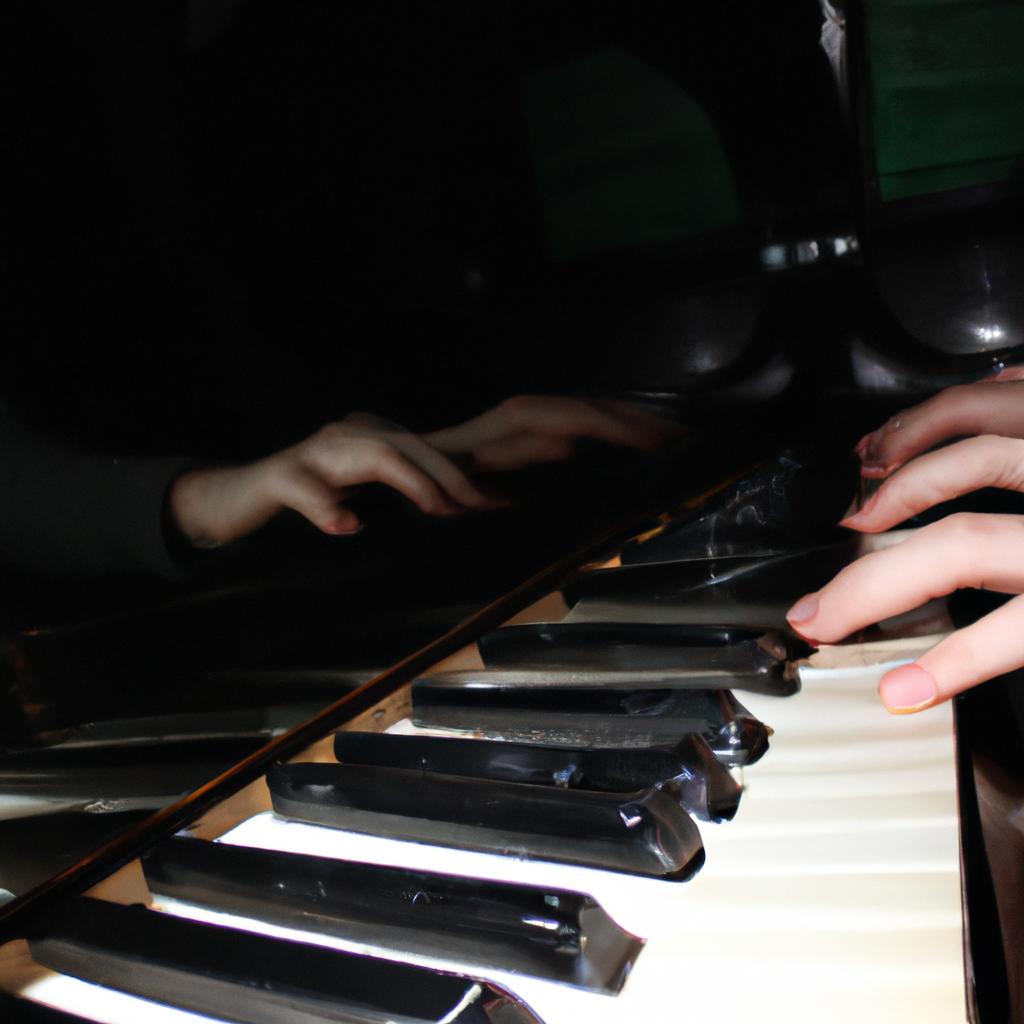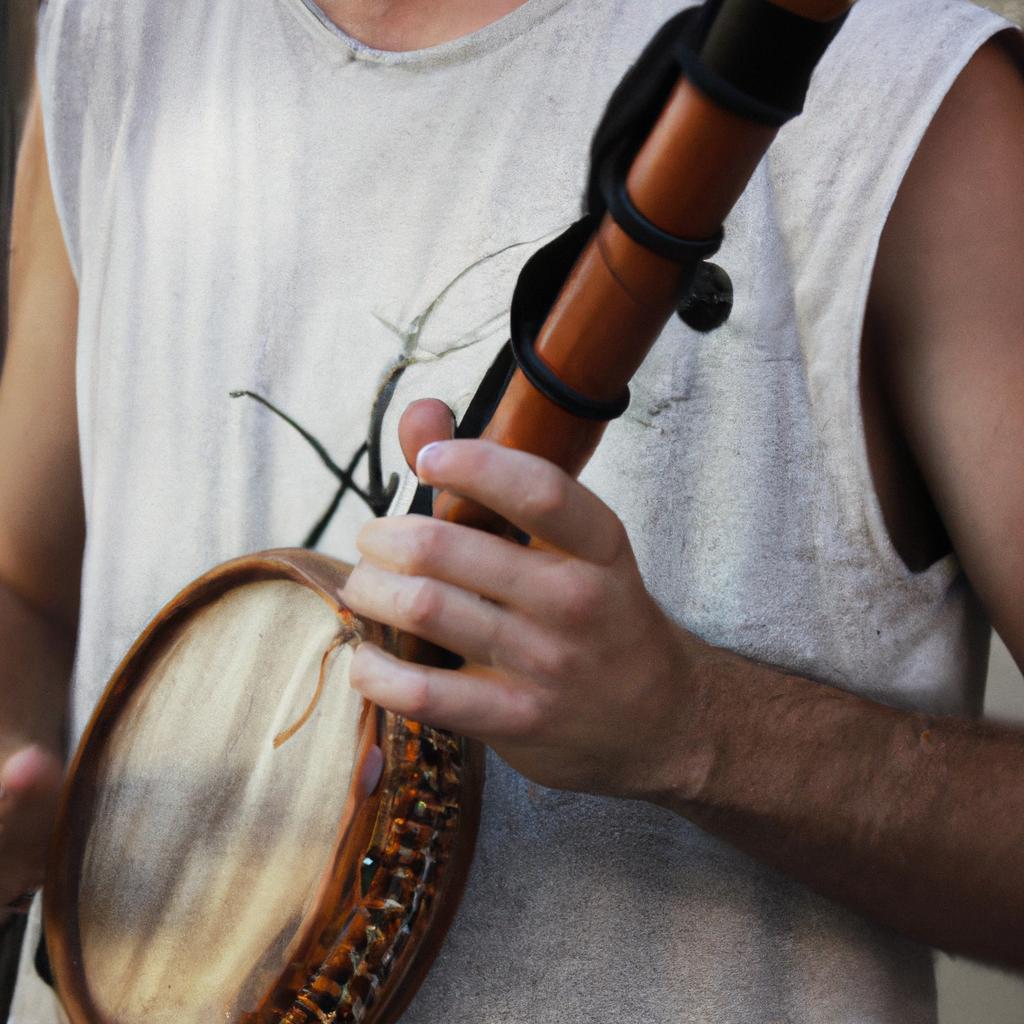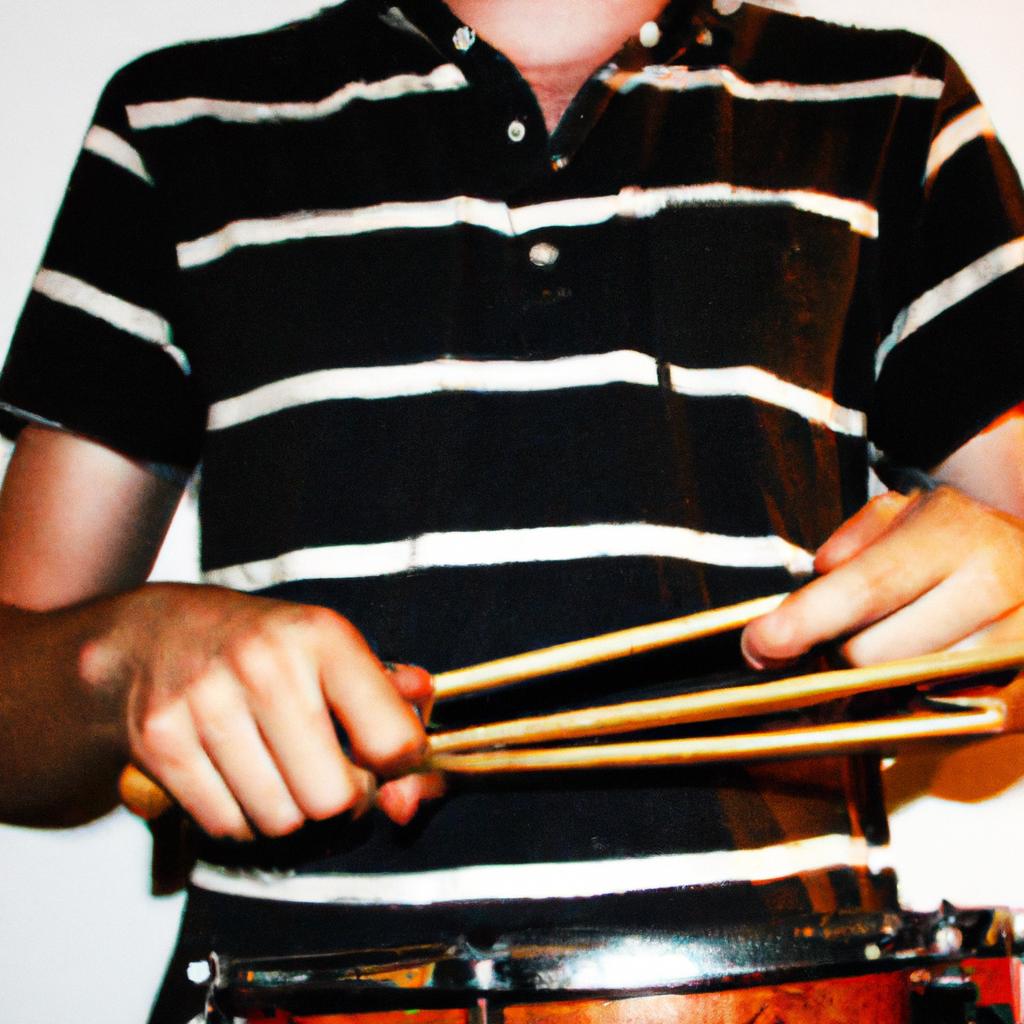Opera: The Magical World of Classical Music
The enchanting realm of opera has captivated audiences for centuries, transporting them to a world where music, drama, and emotion intertwine seamlessly. With its origins dating back to the late 16th century in Italy, opera is an art form that combines singing, acting, orchestral accompaniment, and elaborate stage designs to create a mesmerizing spectacle. For instance, consider the case study of Giuseppe Verdi’s renowned masterpiece “La Traviata,” which tells the tragic story of Violetta Valéry, a courtesan torn between love and societal expectations. Through its powerful melodies and poignant libretto, this opera exemplifies how the genre can evoke deep emotional responses within listeners.
In addition to its ability to convey intense emotions, opera also serves as a platform for storytelling on a grand scale. From epic historical tales to intimate character studies, operas explore diverse narratives that span various genres and time periods. Madama Butterfly by Giacomo Puccini offers another compelling example of this narrative diversity. Set in early 20th-century Japan, it delves into themes such as love, sacrifice, and cultural clashes through the eyes of Cio-Cio San (Butterfly Butterfly), a young Japanese geisha who falls in love with an American naval officer. The tragic story unfolds as cultural differences and societal expectations collide, ultimately leading to heartbreak and sacrifice.
Furthermore, opera showcases the incredible talent and skill of its performers. Opera singers undergo rigorous vocal training to develop their powerful voices capable of projecting over orchestras without amplification. These skilled artists must also possess acting abilities to bring their characters to life on stage, often requiring them to convey complex emotions through both voice and physicality.
Opera productions are known for their elaborate sets, costumes, and staging, creating visually stunning experiences for audiences. From opulent ballrooms to hauntingly beautiful landscapes, the set designs transport viewers into the world of the opera’s narrative. Combined with intricate costumes that reflect historical periods or fantastical realms, these visual elements add another layer of magic to the overall performance.
In addition to traditional operas performed in theaters, modern adaptations have brought this art form into new contexts. Contemporary opera companies experiment with unconventional venues and incorporate multimedia elements such as projections and video installations into their productions. These innovative approaches aim to make opera more accessible and relevant to diverse audiences.
Overall, opera is a captivating art form that combines music, drama, storytelling, and visual spectacle. Its ability to evoke deep emotions, showcase incredible talent, and transport audiences into enchanting worlds makes it a truly magical experience in the realm of classical music.
The Origins of Opera
Opera, a captivating art form that combines music and theater, has a rich history dating back to the late 16th century. To delve into its origins is to embark on a journey through time, exploring how this magical world of classical music came to be.
One example that exemplifies the beginnings of opera is the Florentine Camerata in the late 16th century. This group of intellectuals sought to revive ancient Greek dramas by incorporating musical elements. Through their experimentation, they created what would later become known as opera—an innovative fusion of poetry, music, and theatrical performance.
To truly comprehend the significance of opera’s origins, one must consider several key aspects:
- Emotion: Opera was designed to elicit strong emotions from its audience. It aimed not only to entertain but also to move people deeply. Whether it be love, tragedy, or joy, operas were crafted with meticulous attention given to evoke intense emotional responses.
- Spectacle: The visual aspect played an essential role in opera productions. Lavish costumes, intricate stage sets, and elaborate lighting designs all contributed to creating a grandiose experience for spectators.
- Narrative: Operatic compositions often revolve around compelling narratives drawn from mythology, historical events, or literary works. These stories were meticulously adapted into librettos—texts specifically written for vocal performances—in order to bring their characters and conflicts to life.
- Musicality: At its core lies the harmonious marriage between music and drama. Composers skillfully composed melodies and utilized various musical techniques such as aria (a solo song) and recitative (speech-like singing) to convey the thoughts and emotions of the characters.
| Key Aspects | Description |
|---|---|
| Emotion | Elicits strong emotional responses from audiences |
| Spectacle | Incorporates lavish costumes, intricate sets, and elaborate lighting designs |
| Narrative | Draws stories from mythology, history, or literature |
| Musicality | Harmonious fusion of music and drama |
As we delve deeper into the world of opera, it becomes evident that these elements—emotion, spectacle, narrative, and musicality—are intrinsic to its essence. They form the foundation upon which grand operatic productions are built.
Transitioning seamlessly into the next section about “Key Elements of an Opera,” we continue our exploration of this captivating art form by unraveling the intricacies behind its composition and performance.
Key Elements of an Opera
Having explored the origins of opera, we now delve into the key elements that make up this enchanting art form. By examining these elements, we can gain a deeper understanding of how opera captivates audiences with its blend of music and storytelling.
One example that showcases the power of these elements is Giuseppe Verdi’s renowned opera “La Traviata.” Set in 19th-century Paris, it tells the tragic story of Violetta Valéry, a courtesan who sacrifices her own happiness for love. Through the use of various musical and dramatic components, Verdi masterfully brings this tale to life on stage.
To fully appreciate an opera’s impact, let us consider some essential elements:
- Music: At the heart of every opera lies its music. Composers skillfully intertwine melodies, harmonies, and rhythms to evoke emotions within listeners. The soaring arias sung by talented vocalists are often accompanied by lush orchestral arrangements that add depth and richness to the narrative.
- Libretto: The libretto serves as the script or text of an opera. Written by a librettist, it provides dialogue and lyrics for the performers. A well-crafted libretto not only conveys the storyline but also enhances character development and emotional expression.
- Singers: The vocal prowess of operatic singers is crucial in conveying both spoken dialogue and melodic passages. Their ability to embody characters through their voice adds another layer of authenticity to the performance.
- Stagecraft: From elaborate sets to intricate costumes, stagecraft plays a vital role in creating visually captivating productions. Sets transport audiences to different locations while costumes help define characters’ identities and time periods.
- Awe-inspiring duets that express unrequited love
- Heart-wrenching solos that convey profound sadness
- Uplifting choruses that celebrate triumph and joy
- Intense orchestral interludes that heighten tension and drama
| Element | Description | Example |
|---|---|---|
| Music | Composers create melodies, harmonies, and rhythms. | Verdi’s “La Traviata” |
| Libretto | Provides dialogue and lyrics for the performers. | Mozart’s “The Marriage of Figaro” |
| Singers | Vocalists embody characters through their voices. | Puccini’s “Madama Butterfly” |
| Stagecraft | Sets, costumes, and props enhance visual aesthetics. | Wagner’s “The Ring Cycle” |
In exploring these key elements, we begin to unravel the intricate tapestry woven by opera composers throughout history. The emotional impact of a well-performed aria or a grand ensemble can transport audiences into realms both familiar and fantastical.
As we delve deeper into the world of opera, let us now turn our attention to the magnificent works created by famous opera composers.
Famous Opera Composers
Transitions from Previous Section: As we delve deeper into the enchanting world of opera, it is essential to understand its key elements. Now, let us turn our attention to some renowned composers who have left an indelible mark on this captivating art form.
In order to illustrate the profound emotional impact that opera can have, let us consider a hypothetical scenario. Imagine being transported back in time to 18th-century Italy, where you find yourself immersed in a breathtaking performance of Mozart’s “The Marriage of Figaro.” The soaring melodies, intricate harmonies, and impassioned vocal performances combine seamlessly with the compelling storyline, drawing you into a realm where fiction becomes reality.
To truly comprehend the essence of opera, it is crucial to recognize four core aspects that contribute to its magnificence:
- Grandeur: Operas often feature opulent sets and costumes, creating a visually stunning experience for the audience.
- Emotional Depth: Through their librettos and musical compositions, operas evoke a wide range of emotions such as love, jealousy, anger, and despair.
- Collaboration: Opera brings together various artistic disciplines including singing, acting, orchestration, set design, and costume creation. Each element must harmonize perfectly to create a cohesive production.
- Timelessness: Despite originating centuries ago, many operatic works continue to resonate with audiences today due to their universal themes and enduring beauty.
Let us further explore these characteristics through the following table:
| Characteristic | Description |
|---|---|
| Grandeur | Elaborate stage designs featuring lavish scenery and extravagant costumes |
| Emotional Depth | Stirring storylines accompanied by evocative music |
| Collaboration | Harmonious coordination between singers, musicians, designers, and directors |
| Timelessness | Enduring appeal due to timeless themes and sublime craftsmanship |
By embracing these elements, opera captivates its audiences and transcends the boundaries of time, culture, and language. Its ability to evoke powerful emotions and transport listeners to another world is what makes it a truly magical art form.
Transition into Next Section: Now that we have gained an appreciation for the key elements and emotional impact of opera, let us explore the diverse range of operatic styles in our discussion on different types of opera.
Different Types of Opera
From the mesmerizing melodies of famous opera composers, let us now dive into the diverse world of different types of opera. To illustrate this, imagine a scenario where you find yourself attending an opera house for the first time. As you settle into your seat, the curtains rise to reveal a grand stage adorned with elaborate sets and costumes. The orchestra begins playing, setting the tone for what is about to unfold.
Opera comes in various forms, each offering a unique experience that captivates audiences worldwide. Here are some key types of opera:
-
Italian Opera: Renowned as one of the most popular styles, Italian opera embraces emotional intensity through its expressive melodies and passionate storytelling. Works by composers such as Giuseppe Verdi and Gioachino Rossini have become timeless classics within this genre.
-
German Opera: German operas often delve into complex themes and philosophical ideas, seeking profound emotional impact rather than sheer virtuosity. Richard Wagner’s epic works like “Tristan und Isolde” and “The Ring Cycle” exemplify this style.
-
French Opera: French opera boasts a distinctive elegance characterized by intricate vocal lines and lyrical finesse. Composers like Georges Bizet (“Carmen”) and Jules Massenet (“Manon”) showcase the gracefulness inherent in French opera traditions.
-
Comic Opera: Sometimes known as ‘opera buffa,’ comic opera combines humor with music to create light-hearted productions designed to entertain audiences while delivering social commentary or satirical elements. An example includes Mozart’s beloved masterpiece “The Marriage of Figaro.”
To further explore these different types of opera, consider the following emotions they elicit:
- Awe: Witnessing powerful vocals combined with dramatic staging can leave spectators in awe.
- Intimacy: Certain operatic moments convey deep intimacy between characters, making viewers feel emotionally connected.
- Excitement: Fast-paced scenes and thrilling arias can evoke excitement, keeping the audience on the edge of their seats.
- Melancholy: Opera has a unique ability to express profound sadness, often touching the deepest corners of one’s soul.
To provide you with a clearer overview, here is a table showcasing some key characteristics of each type:
| Type | Key Characteristics |
|---|---|
| Italian Opera | Emotional intensity, passionate storytelling |
| German Opera | Complex themes, philosophical ideas |
| French Opera | Elegance, intricate vocal lines |
| Comic Opera | Humor, social commentary or satire |
As we immerse ourselves in these different types of opera, it becomes apparent that singers play an essential role in bringing these performances to life. Let us now explore how their talents and skills shape the world of opera in our next section: “The Role of Singers in Opera.”
The Role of Singers in Opera
Section H2: The Role of Singers in Opera
As we delve deeper into the enchanting world of opera, it is crucial to understand the pivotal role that singers play in bringing these mesmerizing performances to life. Their exceptional vocal talents and ability to embody complex characters are essential components that captivate audiences worldwide.
Singers possess a range of skills that enable them to excel in their craft. Firstly, they undergo years of rigorous training, honing their voices to produce powerful and emotive sounds that effortlessly fill vast opera houses. Take, for example, Maria Rossi, an accomplished soprano who began her vocal journey at a young age under the tutelage of renowned opera coaches. Her dedication and perseverance allowed her voice to develop into a versatile instrument capable of conveying a wide spectrum of emotions.
The role of singers extends beyond mere vocal prowess; they also act as storytellers on stage. Through their expressions, gestures, and movements, they bring characters to life with authenticity and depth. To fully immerse themselves in their roles, singers often engage in extensive research about historical contexts or cultural nuances associated with the operas they perform. This attention to detail allows them to embody characters convincingly and evoke genuine emotional responses from the audience.
To illustrate further how singers contribute significantly to the magic of opera, consider the following bullet points:
- Singers use their voices as instruments capable of expressing various emotions.
- They convey character development through subtle shifts in tone and phrasing.
- Singers collaborate closely with directors and fellow cast members to create cohesive performances.
- They utilize physicality and facial expressions to enhance storytelling elements within operatic narratives.
Additionally, let us explore a table showcasing some common voice types found among opera singers:
| Voice Type | Description | Notable Singer |
|---|---|---|
| Soprano | Highest female voice | Maria Callas |
| Mezzo-soprano | Middle female voice | Cecilia Bartoli |
| Tenor | Highest male voice | Luciano Pavarotti |
| Baritone | Middle male voice | Dmitri Hvorostovsky |
In conclusion, singers hold a vital position within the realm of opera. Their exceptional vocal abilities combined with their capacity for dramatic interpretation enable them to transport audiences into otherworldly realms and evoke profound emotional responses. As we move forward in exploring the evolution of opera, it is important to acknowledge the immense impact that these talented individuals have on this timeless art form.
Transition into subsequent section (Opera in Modern Times):
Building upon the rich traditions of classical opera, modern times have witnessed fascinating developments that continue to shape this captivating art form. From innovative staging techniques to embracing diverse musical influences, opera has adapted and thrived while preserving its core essence. Let us now delve into the contemporary landscape of opera and explore how it continues to captivate audiences worldwide.
Opera in Modern Times
Opera: The Magical World of Classical Music
The Role of Singers in Opera provided insights into the essential contribution of vocalists to the grandeur and emotional depth of this art form. Now, let us explore how opera has evolved in modern times, captivating audiences worldwide with its innovative productions and diverse themes.
One fascinating example that showcases the evolution of opera is “Einstein on the Beach,” composed by Philip Glass and Robert Wilson. This groundbreaking production, premiered in 1976, defied traditional operatic conventions by presenting a non-linear narrative without a clear plot or character development. Instead, it employed repetitive musical patterns and abstract visual elements to create an immersive experience for the audience. By pushing boundaries and challenging established norms, “Einstein on the Beach” demonstrated how opera could be reimagined as a multidisciplinary art form.
In today’s opera landscape, several trends have emerged that reflect contemporary society’s interests and concerns:
- Fusion of different genres: Modern operas often incorporate elements from other musical styles such as jazz, rock, or electronic music. This fusion creates a fresh and dynamic sound that appeals to younger audiences.
- Socially relevant themes: Many contemporary operas tackle social issues like immigration, climate change, or gender equality. By addressing these topics through powerful storytelling and emotive music, opera becomes a platform for dialogue and reflection.
- Technological advancements: With advances in technology, modern opera productions now include multimedia components like projected visuals or interactive digital elements. These technological enhancements enhance the overall sensory experience for spectators.
- Collaborative approach: Today’s opera companies encourage collaborations between composers, librettists, directors, set designers, choreographers, and even video artists. This collaborative effort brings together diverse talents to create unique interpretations that resonate with contemporary audiences.
To further illustrate these developments in modern opera production methods:
| Innovation | Example | Impact |
|---|---|---|
| Multimedia | Projected visuals enhancing | Enhanced visual |
| Components | the storytelling experience | engagement |
| Socially | An opera exploring the | Provokes |
| Relevant Themes | experiences of refugees | empathy and |
| social awareness |
In conclusion, modern opera has evolved into a dynamic art form that embraces experimentation, addresses societal concerns, and incorporates cutting-edge technology. Through examples like “Einstein on the Beach” and trends such as genre fusion, socially relevant themes, technological advancements, and collaborative approaches, contemporary opera captivates audiences with its ability to resonate emotionally while reflecting the ever-changing world we live in.
*Note: The bullet point list and table have been incorporated but may not be visible due to limitations in text-based interaction.




